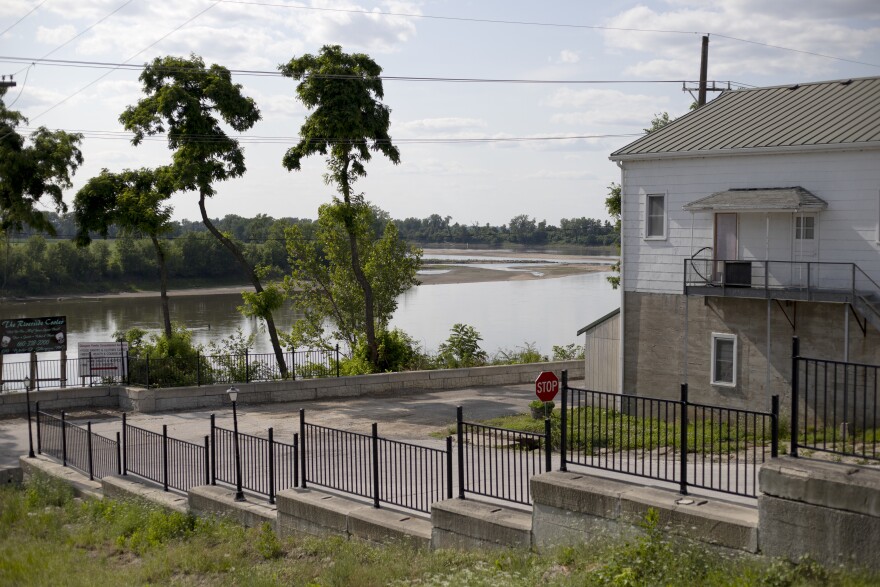Rhonda Monnig was a young mother when the Great Flood of 1993 hit Glasgow, Mo. in early July. She gave birth to her second son the night her house in town flooded. The rest of her family tucked everything they couldn’t take with them — things like VCR tapes and photo albums — in the top shelves of their closets and left the house.
A few days later, the water was still too high to drive to their house or even walk there. Monnig’s husband went by boat with friends. Their five year old son begged to join him, and Monnig knew there was no point arguing after they found a child’s size life jacket.
“So I got down on my knees and looked him straight in the eyes,” Monnig said. “I said, ‘You listen to what they say. Don’t walk in the boat. Don’t put your hands over the boat. Just sit there.’” She counted off the rules with her fingers.
“He comes home and he says, ‘There were fishies in my room.’”
Flood water had almost fully submerged the Monnig’s home, flipping over their shed and washing away their crops.
Glasgow sits just north of the Missouri River. The town is tucked behind towering silos on one side, on a street that’s easy to drive past if you don’t know what to look for.
Thirty years ago, Monnig’s family took pictures of the land during and after the flood. While other towns along the river were left with heaps and heaps of mud, Glasgow was left with a thick layer of sand.
“Where we lived at, it looked like a desert,” Monnig said. “A lot of sand. We had over 100 fruit trees, and we were going to have fruit on them that year … It was just gone.”
The house was ruined. Monnig said there was no way they could go back.
“And so we stayed here,” Monnig said in the living room that was once her parents’.

The Monnig’s and even the town of Glasgow aren’t the only ones who look back on the ‘93 flood.
Christina Holzhauser, from Portland, Missouri, can still recognize the smell of flood water. She remembers what the sand felt like on her hands when she was recruited to sandbag part of the town at 13.
“That was a pretty wild occasion because it is a very visceral memory of wet hands and raw skin trying to tie up these plastic bags,” Holzhauser said. “You’re just gritty, and I remember that terrible feeling.”
Her childhood home had river water approaching from one side and creek water on the other.
“That was really, really scary because I thought it looked like the creek was going to hit us first,” Holzhauser said.
But it didn’t. Somehow, the flood didn’t quite make it to Holzhauser’s family home. Still, it taught her about the power of the river.
“The river is part of us, but it also controls us,” Holzhauser said. “I feel like river people really respect the river, and they know to be afraid of it.”

Those from river towns often treat the river as a being, not just a body of water.
“It’s like a god,” Holzhauser said.
Floods bring tragedy, but for people in river towns, they’re a fact of life. The consequences of living in a river town have to be dealt with, and the people have to be able to move on.
“I don’t really remember talking about it with my friends very much,” Holzhauser said. “It’s a weird thing that happened. I think we just all dealt with it like southern Midwesterners, and we’re like, well, that’s over.”
Monnig’s life went on after the flood, too.
“You have to go with the flow,” she said. “You just have to keep on looking ahead and don’t look back."
The floods, including the flood of ‘93, are part of the river’s character and history, but that’s not all the river is. If it were, people wouldn’t stay. Even after the floods in Glasgow and Portland, Monnig and Holzhauser are river people at heart.











